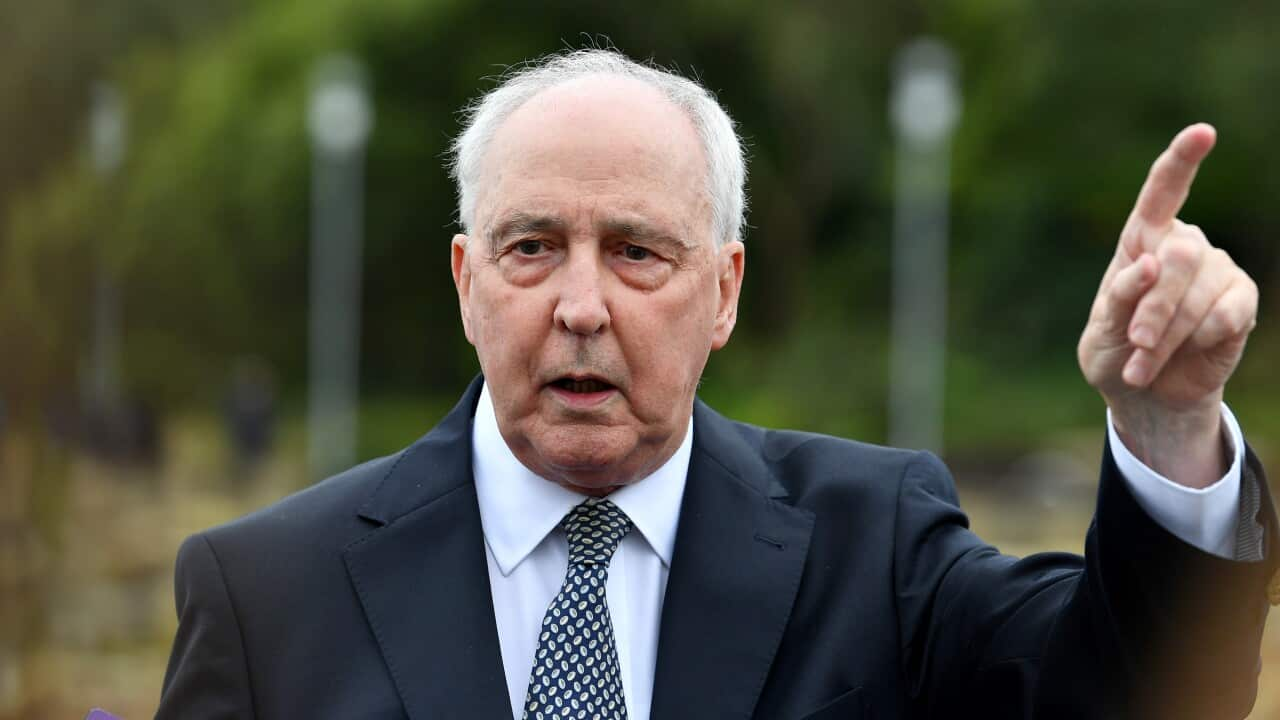Key Points
- Former Prime Minister Paul Keating has condemned Opposition leader Peter Dutton’s nuclear energy proposal.
- Dutton has pledged to build seven nuclear plants across five states on the sites of coal-fired power stations.
- The plan’s cost to taxpayers will be at least $116 billion, according to estimates.
A plan to power Australia with nuclear energy has been condemned by former prime minister Paul Keating who’s labelled it as climate change denialism in disguise.
Opposition leader Peter Dutton has pledged to on the sites of coal-fired power stations if the Coalition wins government at the next election.
Costs and details of the plan remain scant, and its rushed timeline.
Keating is scathing about the proposal and lashed out at Dutton, calling him a “peddler of danger”.
“Dutton’s policy, of its essence, is that human-induced climate change is a fraudulent concept propagated by environmentalists and left-leaning fellow travellers — a concept he believes should be deplored and opposed,” he wrote in a statement released on Sunday.
“A denialist now seeking to camouflage his long held denialism in an industrial fantasy – resort to the most dangerous and expensive energy source on the face of the earth – nuclear power.
“By his blatant opposition to renewables, Dutton calls into question and deprecates all the government has done to provide Australian business with a reliable and dependable framework for investment in renewables.”
Dutton’s office has been contacted by SBS News for comment.
Using data from the CSIRO’s latest GenCost report and the Australian Energy Market Operator’s Integrated System Plan, the Smart Energy Council estimates the plan’s cost to taxpayers will be at least $116 billion.
This is equivalent to delivering 82 per cent renewables by 2030, and an almost 100 per cent renewable energy mix by 2050, including the cost of building all of the enabling transmission infrastructure, the council said.
Under the operator’s forecast, the total expenditure required to fund all generation, storage, firming and transmission infrastructure was found to have a 2024-dollar value of $121 billion, to be invested gradually out to 2050.
The bulk of the $121 billion would be invested by the private sector between now and 2050 to deliver about 300 gigawatts of capacity by 2050.
These figures compare to just 11 gigawatts of nuclear capacity funded by the taxpayer in the opposition’s proposal, the council said.
Smart Energy Council chief executive John Grimes said Dutton’s nuclear proposal would deliver “at best” 3.7 per cent of the energy required at the same cost as the government’s current strategy.
“In reality, current cost overruns happening right now in the UK could mean a $600 billion bill to Australian taxpayers, whilst delivering a small proportion of the energy that is actually required,” he said.
Nuclear had no place in a country with cheap, reliable energy powered by the sun and wind and backed up by renewable energy storage, Grimes said.
“The most optimistic assessment of Peter Dutton’s nuclear proposal indicates it is a pale shadow of the reliable renewables plan outlined and costed by the Australian Energy Market Operator.”
The council has called on the Opposition to release its analysis of the costings and generation capacity from the seven proposed reactor sites.
Opposition energy spokesman Ted O’Brien said Australians “won’t have long to wait” until they understand how much energy nuclear power will contribute to the nation’s energy mix.
Nationals Leader David Littleproud conceded there would be an upfront price but assured Australians the costings would be delivered “well before the election”.
“There’s a big difference between the upfront costs and the dividends that it’ll pay back over the life of the assets,” he told Sky News.
Health Minister Mark Butler accused the Coalition of “playing with figures”.
“Peter Dutton’s plan … would cost $600 billion and that would be paid for by taxpayers – that’s equivalent to about 20 years of Medicare,” he told reporters in Adelaide.
“What’s that going to do to our taxes? Nuclear energy is simply far too expensive to invest in, in Australia.
“The lowest cost form of new energy investment is clearly renewable energy.”

